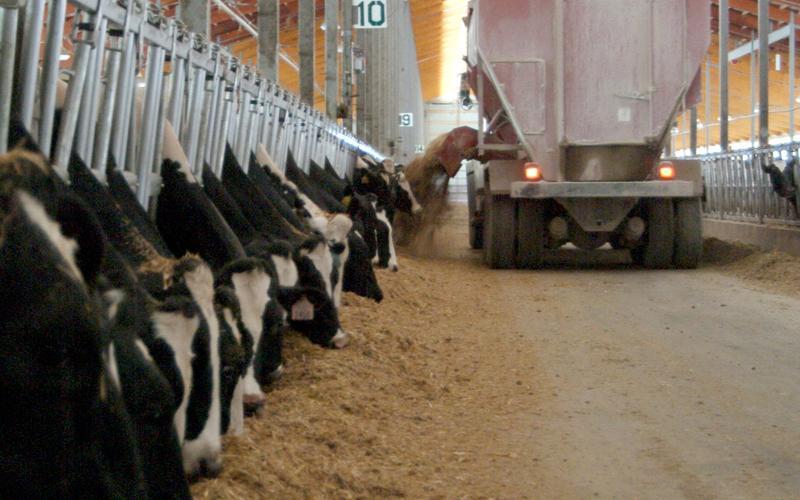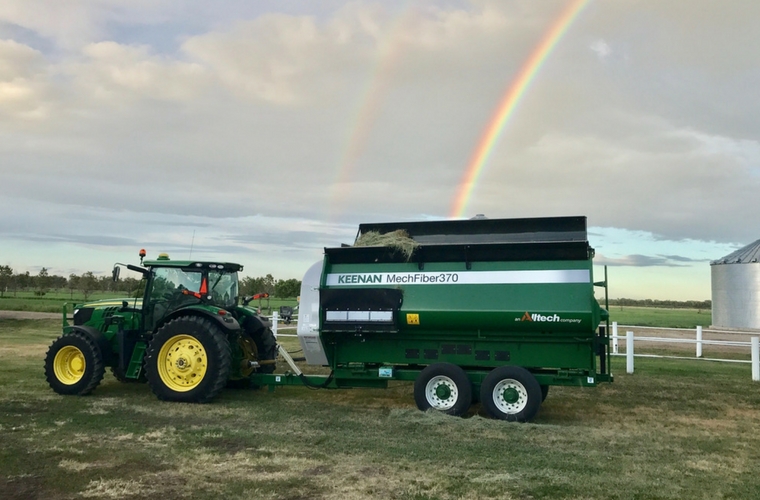Documenting trends is the closest thing in business to peering into a crystal ball. When it comes to consumer food trends, a dizzying variety of surveys from around the world readily fill pages upon pages of a Google search.
But which trends are long-term and which are just passing fads? What are shoppers really thinking? What’s influencing or impacting their behaviors? And what’s driving their purchases?
A particular pair of studies stands out for depth of insight for those along the food chain whose job it is to tweak strategic consumer marketing plans.
PERIscope 2017 is a biennial, large-scale quantitative study launched in 2001 by Bord Bia, the Irish Food Board. Based on interviews with 1,000 consumers in each of eight countries, the study identifies major shifts in consumer attitudes over time. The eight markets include Ireland and Great Britain, four continental European Union markets, as well as the U.S. and China. The study explores consumer attitudes about eating at home, cooking, local food, the environment, and health and well-being.
A second survey taps into the consumer food trend perceptions of more than 1,700 registered dietitians (RDs). What’s Trending in Nutrition, an annual survey produced in partnership between Pollock Communications and Today’s Dietitian magazine, covers bases ranging from shifting attitudes to favored resources and much in between.
Here are some of the highlights featured in each.
A source of tension
Among the standout trends of 2017 illuminated in the eight-nation PERIscope survey is a tension between the desire for “new” versus the comfort of tradition.
“We know that across all markets, consumers are placing more importance on spending time as a family over meals, enjoying cooking more and increasingly hosting dinner parties, all indicating people’s desire to balance modern life with tradition,” said David Deeley, a member of Bord Bia’s consumer and market insight team.

Among the countries surveyed for PERIscope, China, followed by Spain, leads in striving to balance modernization and tradition. The U.K. is ranked 7th and the Netherlands dead last in this category.
This finding is supported by the Today’s Dietitian survey, which attributes the latest shift in consumer food perceptions to a slower and more thoughtful approach to eating.
Keep it real
When it comes to authenticity, noted PERIscope’s Deeley, “consumers are tired of uniform, impersonal, throw-away products and the invisible nature of global supply chains. They crave stronger connections with the brands they buy, increasingly seeking out authentic and storied products that tell their brand story in an interesting and resonating way.”
What’s the story behind the story?
The demand for transparency is as strong as ever. The PERIscope survey finds consumers continuing to challenge producers to provide the full details about their food products. Labeling and quality symbols are a major point of interest for many countries, especially in China, where many people have lost faith in the safety of produce.

Provenance and quality matter. In Ireland, 78 percent of food shoppers check for country of origin, while checking for quality symbols stands at 75 percent, up by 20 percent since 2001. In the U.S., almost 7 in 10 people claim to check for country of origin, while 67 percent of consumers check for a symbol or certificate that guarantees the quality of the produce, according to the survey.
Registered dietitians responding to the Today’s Dietitian poll indicate that GMO-free and sustainable foods have experienced on average a 20 percent decrease in terms of what concerns consumers.
“Dietitians attribute this decline to food label transparency and more food companies changing their ingredient deck,” the report said.

And 59 percent of dietitians said consumers are choosing to "eat clean,” selecting foods that are less processed as well as more whole foods, such as veggies, fruits, ancient grains and green tea. Plant-based proteins like nuts and seeds also figure more prominently in diets.
Make it lasting and environmentally friendly
Smart devices deliver a mind-boggling amount of information about brand practices, processes and procedures. The result?
“Consumers are calling out inappropriate, bland or opaque brand behavior and are sharing it with their peers,” observed Deeley.
The PERIscope study finds that consumers prefer to buy from companies that are aware of environmental issues and the value of sustainability.
“We also know that they’re increasingly more aware of terms like ‘food waste’ and ‘sustainably produced' in countries like Spain, Germany and the Netherlands, where awareness of both tops 90 percent,” he said.
Across all eight markets, the survey shows that consumers are adopting a greener mindset and are increasingly drawn to eco-friendly businesses and practices.
Deeley’s suggestion to food producers and processors: “Recycling, upcycling, downcycling, zero waste — it doesn’t matter what you call it. Just be sure that you adopt a green mindset and eliminate any negative environmental impact your products and services may directly or indirectly cause before, during and after production — this includes the entire consumption cycle, too.”
Localism lives on

With a growing number of adults turning toward the local and the familiar, the emergence of the “locavore” is becoming ever more pervasive, according to the PERIscope 2017 survey.
“Local food for consumers means food that is better quality and is transparent in its production processes,” said Deeley. “A growing number are looking closer to home for groceries, and more and more are seeing the importance of purchasing from their local communities. This trend holds true across most countries, with the French placing the most importance on buying local foods (79 percent).”
China (76 percent) and Spain (75 percent), Ireland (67 percent), Germany (64 percent) and the U.S. (60 percent) are warming to the concept. Consumers in Great Britain (55 percent) and the Netherlands (35 percent) are the least interested in seeking out specifically local food sources.
Make it quick — but good
Demand for foods that are quick to prepare has been on the rise. Pre-portioned meal delivery services such as Blue Apron, HelloFresh and FreshDirect have skyrocketed, with 45 percent of consumers now turning to these and similar healthy meal or weight loss menu delivery programs in order to eat healthier, according to the Today’s Dietitian survey.
“In Ireland, this figure rose from 56 percent in 2001 to almost 7 in 10 (69 percent) in 2017,” according to PERIscope’s Deeley. “The majority of Americans have a tendency to pick foods that are easy to prepare (91 percent) and quick to cook (85 percent). More than 7 in 10 people claim to eat convenience or ready-prepared meals regularly.”
In an observation worthy of the attention of food labelers, Deeley noted some uncertainty about which foods are healthy, “with close to half of those polled claiming to be confused about the health benefits of particular foods and 60 percent saying nutritional claims and food labels are hard to understand.”
Keep it interesting
More than 7 in 10 consumers in all eight countries of the PERIscope survey claim they like to try new foods. An increasingly wider variety of foods is available in today’s markets, making it is easier for consumers to explore foods from around the world.
And there’s China again, leading this time in adventurous eating, with 96 percent saying they like to try new foods. And once again, the Chinese are trailed closely by Spanish consumers in an open-mindedness about new foods (94 percent), while the French (81 percent) and Irish (74 percent) are more likely to stick with what they know.
There are apps for that
When it comes to technology, Chinese consumers are far ahead of their counterparts in the seven other countries surveyed by PERIscope in 2017.
Asked if they have ever downloaded a food app, 76 percent of Chinese consumers responded that they have. The next closest are Americans at 34 percent, with only 19 percent of Irish and 18 percent of consumers in the U.K. poking at food icons on their smart devices.
What is influencing consumer perception?
The survey of dietitians looked at the sources of consumer nutrition information. Most (73 percent) said consumers rely on blogs and websites, followed by social media (70 percent). Fifty-eight percent turn to television and radio for most of their information.

The survey also reveals a paradox by asking where consumers get the most nutrition misinformation. Seventy-seven percent cited social media, 67 percent pointed to blogs and websites, and 63 percent said celebrities often get it wrong (a change from 2016, when celebrities were believed to be more misleading than social media).
Consumers gauge their health and weight, according to the dietitians, by comparing themselves to people in magazines or on television (72 percent), friends/family members (64 percent) or people on social media (57 percent).
Food consumers in China are far more likely than those in the other seven countries of the PERIscope survey to share recipes via social media — 77 percent of Chinese respondents versus the next highest social media users, Americans at 41 percent.

Where are registered dietitians sourcing their own information? According to the Today’s Dietitian survey, most (80 percent) of RDs have bookmarked the U.S. Department of Agriculture’s MyPlate website for nutrition education. Sixty-five percent include the published resources of the Academy of Nutrition and Dietetics among their tools.
What leaps off the page
“For me, the most interesting story is revealed when we look back at the 2001 report and track the changes over time,” said Deeley. “The world was certainly a very different place, and that is reflected in those reports. Today, we know that health and well-being have changed dramatically over time, with people now making more conscious decisions to enjoy a holistic approach to physical health and emotional well-being.”
Although dietitians say consumer awareness of healthy food has increased and mindful eating is on the rise in 2017, they note that issues of access and cost continue to prevent certain populations from being able to eat and purchase healthy food.
“For low-income consumers, RDs say that cost, above all other factors including physical health, is the largest barrier when making food purchasing decisions,” suggests the Today’s Dietitian study. “This often makes healthy eating options out of reach for low-income families. RDs recommend increasing affordability and availability of nutritious food in low-income areas to help reduce barriers to healthy eating.”
The polling for what’s hot and what’s not in 2018 is underway. It will be interesting to see how these trends persist, shift or change altogether in the coming year.





























